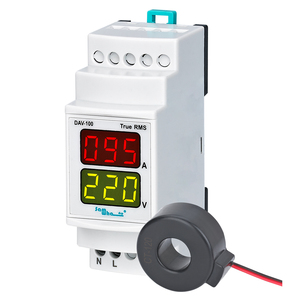Introduction to Non-Contact Digital Tachometer
A non-contact digital tachometer is an essential tool for measuring the rotational speed of an object without the need for physical contact. Widely used in various industries, this device leverages advanced technology to provide accurate readings for maintenance, diagnostics, and quality control. The non-contact feature enhances its usability by allowing measurements in situations where direct physical interaction is impractical, minimizing wear and tear on both the device and the object being measured.
Types of Non-Contact Digital Tachometers
Non-contact digital tachometers come in various types, each designed to suit different applications:
- Laser Tachometers: Utilize laser beams to measure RPM from a distance, suitable for high-speed applications.
- Infrared Tachometers: Operate using infrared light to detect rotation, ideal for indoor and outdoor measurements.
- Photoelectric Tachometers: Use light reflection to determine speed, recommended for transparent or reflective surfaces.
- Magnetic Tachometers: Employ magnetic fields to measure the speed of ferrous materials, effective for mechanical components.
Features and Applications of Non-Contact Digital Tachometers
Non-contact digital tachometers are packed with features that enhance their functionality:
- High Accuracy: Typically providing accuracy levels of ±0.05% or better, ensuring reliable measurements.
- Wide Measurement Range: Capable of measuring RPM across a broad spectrum, from slow-moving shafts to high-speed motors.
- Digital Display: Equipped with easy-to-read LCD screens that display real-time speed readings.
- Memory Functions: Some models retain previous measurements for analysis and comparison.
- Portable Design: Compact and lightweight, making it easy to carry and suitable for remote measurements.
Applications are varied and include:
- Manufacturing and production processes to ensure machinery operates within optimal speed limits.
- Aerospace engineering for testing engine and rotor speeds.
- Automotive industries for calibrating and diagnosing engine performance.
- HVAC systems for checking fan speeds and ensuring efficient operation.
Advantages of Using a Non-Contact Digital Tachometer
The advantages of utilizing a non-contact digital tachometer are noteworthy:
- Non-Intrusive Measurements: Eliminates the need for physical contact, preserving the integrity of the measurement process and the equipment.
- Increased Safety: Reduces the risk of accidents, especially when handling high-speed machinery or rotating parts.
- Versatility: Can be used on a wide range of surfaces and materials, enhancing its usability across different industries.
- Easy to Use: Typically features a straightforward interface that allows for quick setup and operation.
- Cost-Effective Maintenance Tool: Provides crucial data for equipment upkeep, potentially minimizing costly repairs and downtime.
How to Use a Non-Contact Digital Tachometer Effectively
Using a non-contact digital tachometer effectively involves several straightforward steps:
- Preparation: Ensure that the tachometer is fully charged or has fresh batteries for reliable operation.
- Calibration: If required, calibrate the device according to the manufacturer’s instructions.
- Aim the Device: Point the tachometer towards the rotating object, making sure to be within the specified distance for optimal readings.
- Activate the Measurement: Press the measure button to initiate the reading; the results will display on the digital screen.
- Record and Analyze: Save or record the measurement for future reference, ensuring to check for trends over time.
By understanding the features, types, applications, and effective usage techniques, professionals can maximize the benefits of this invaluable instrument in their field.












































